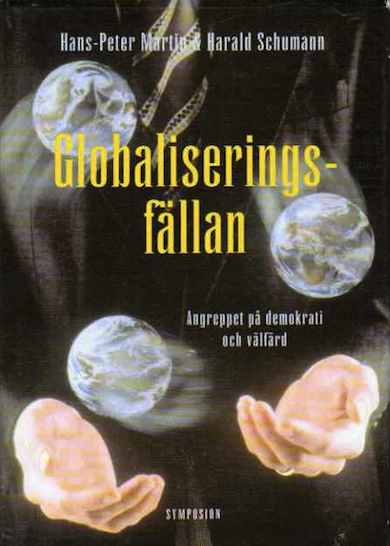

Läkare Sture Blomberg har studerat vaccinationsteorier och gjort en djupdykning i särskilt smittkoppsvaccinationens historia. Resultatet av studierna har förändrat hans syn. Här är inledningen till del 1.
TEXT: Dr STURE BLOMBERG
Originalartikel på Blombergs Blogg: LÄNK DEL 1.
Under första årtusendet e. Kr. inträffade många smittkoppsepidemier i Mellersta Östern och Medelhavsländerna. Inte långt efter Columbus upptäckt av Amerika fördes sjukdomen vidare till denna kontinent med slav- och truppförflyttningar. … I den antika litteraturen finns utförliga beskrivningar av hur människorna flydde hals över huvud och lämnade sina nära och kära att dö utan deras omvårdnad när epidemin slog till under åren 165 e. Kr och 260 e. Kr.
Smittkoppor försvunnit – av oklar anledning
Smittkoppor, också benämnd variola i den vetenskapliga litteraturen, har emellertid totalt försvunnit från USA fr.o.m. 1949 och från hela världen 1980. Det är en allmän uppfattning att detta berodde på de obligatoriska smittkoppsvaccinationerna. Så har jag faktiskt alltid själv uppfattat saken, och säkert många läkarkollegor med mig. Mot bakgrund av den idag växande kritiken mot vaccinationer kan det därför vara viktigt att studera historiken kring smittkoppsvaccinationen, som av förespråkarna framhålls som det kanske främsta exemplet på vaccinationers stora betydelse för hälsoläget i befolkningen.
Variolation vanlig i Ottomanska riket
Smittkoppsvaccinationen i Västerlandet tog sin början 1721 i och med att Lady Mary Wortley Montagu år 1717 återvände från Ottomanska riket, där man tillämpade variolation, dvs. ympning med hudmaterial från smittkoppor. Man tog lite vätska från en persons smittkoppsblåsa, åstadkom ett hudsår på en annan människa och skrapade in denna vätska i detta sår [1]. I bästa fall blev denna människa lite sjuk för en tid, men också immun för resten av livet. Så trodde man i alla fall. Problemet var att viruset också kunde spridas vidare till andra människor och det hände att man i 2-3 % av fallen dog som följd av denna åtgärd. Smittkoppsvaccination föll därför i vanrykte i Europa efter 1728 [2].
År 1738 kom James Kirkpatrick till London från Charleston i South Carolina. Han menade att variolationen där varit enormt framgångsrik varför förfarandet återupptogs i England och till och med blev en lukrativ verksamhet för kirurger då detta utfördes på de mest välbeställda i samhället [3]. Under en epidemi 1752 i Boston kunde man t. ex. visa att färre dog av smittkoppor om de genomgått en variolation. Detta påstods speciellt gälla längre norrut boende vita människor. Man rapporterade att 1/11 vita människor dog naturligt av smittkoppor, men endast 1/80 om de dessförinnan genomgått en variolation; för svarta människor var siffrorna 1/8 respektive 1/20 [4].
I en senare artikel från 1764 rapporterades tvärtemot detta att ympningen faktiskt kunde öka dödstalen [5], eftersom smittan spreds till personer i omgivningen. För att få ett någorlunda objektivt mått på effekten av variolation jämförde artikelförfattaren mortaliteten i smittkoppor både per födda och per begravda 38 år före och 38 år efter att man börjat med variolation 1721. Mortaliteten före och efter 1721 var 9% mot 12,7 per födda och 6,4% mot 8,1% för begravda, vilket motsvarar ökningar med 41 respektive 27 procent. Författaren menade därför att det var lika sannolikt att ympningen startade en epidemi, som att den förhindrade en [5].
Med detta verkade det som om den första fasen i smittkoppsvaccinationens historia, variolationen, fick sitt slut. Den skulle dock 40-50 år senare komma att övergå i en nästa fas: vaccination med kokoppor.
Rykte om kokoppor
Det florerade ett rykte bland mjölkpigor att de som smittats med kokoppor från kossans såriga spenar blev immuna mot smittkoppor. År 1774 skrapade bonden Benjamin Jesty med en stoppnål på sin hustrus och sina två söners hud och gned in vätska från kokopps-blåsor på en kos spenar. Det påstods att sönerna därefter frivilligt exponerade sig för smittkoppor utan att senare bli sjuka.
Edward Jenners Experiment
Edward Jenner, som trodde starkt på denna berättelse, utsatte 20 år senare (1796) pojken James Phipps för ett liknande experiment. Från mjölkerskan Sarah Nelmes såriga händer tog han sjukdomsmaterial, som han trodde härrörde från kokoppor och ympade pojken med detta. Vacca betyder ko och materialet kallades därför vaccinia. Härifrån har vi fått begreppet ”vaccination”. Pojken exponerades sedan avsiktligt för smittkoppor utan att bli sjuk och Jenner förfäktade att pojken blivit livslångt immun mot smittkoppor.
Denna påstående om ”livslång immunitet” skulle senare komma att utsättas för kritik av andra, vilka hävdade att det rörde sig om tio års eller t.o.m. endast ett års immunitet. I en artikel, publicerad mer än hundra år efter Jenners experiment, 1908, slog man fast att en begränsad immunitet bara varade i cirka tre år [6, 7]. Man borde därför vaccinera sig varje år, hävdade en Dr. Olesen, eftersom endast detta var ett ”absolut säkert skydd mot smittkoppor under 6-12 månader” [8]. En annan av Jenners kritiker, Charles Creighton, publicerade 1889 en bok i vilken han påpekade att Jenner stödde sig på ett enda anekdotiskt fall [9], och därför inte borde dra så vidlyftiga slutsatser. Det kan påpekas att man vid denna tid visste väldigt lite om immunitet.
Ännu tvåhundra år efter Jenners experiment (2001), påpekades att det aldrig har funnits någon undersökning där man undersökt vaccinerade kontra ovaccinerade på ett vetenskapligt sätt – trots att läkare har förespråkat vaccination med kokoppor sedan sent sjuttonhundratal [10]. CDC i USA (Center for Disease Control) erkänner att t. o. m. mängden antikroppar, som skyddar mot smittkoppor är okänd till idag [10].
Sture Blomberg
Fortsätt läs på Blombergs Blogg Länk Där finns också referenser. Den spännande fortsättningen i del 2.

















mRNA COVID-19 vaccines may cause fatal neurological damage https://theoutriderjournal.com/mrna-covid-19-vaccines-may-cause-fatal-neurological-damage/
A new research article reveals that mRNA COVID-19 vaccines may create deadly infection-like conditions in the human body by inducing natural proteins to misfold into harmful “pathological prion” forms, which are linked to many serious nervous system disorders.
The work, titled “COVID-19 RNA Based Vaccines and the Risk of Prion Disease” covers the analysis of Pfizer BioNTech’s vaccine candidate and was published in January by an American immunologist, in the peer reviewed journal “Volume 5, Issue 1, of Microbiology & Infectious Diseases, 2021”.
The abstract of the research states in part: “The results indicate that the vaccine RNA has specific sequences that may induce TDP-43 and FUS to fold into their pathologic prion confirmations. … Furthermore, the spike protein, created by the translation of the vaccine RNA, binds angiotensin converting enzyme 2 (ACE2), a zinc containing enzyme. This interaction has the potential to increase intracellular zinc. Zinc ions have been shown to cause the transformation of TDP-43 to its pathologic prion configuration. The folding of TDP-43 and FUS into their pathologicprion conformations is known to cause ALS, front temporal lobar degeneration, Alzheimer’s disease and other neurological degenerative diseases.”
Biological proteins are molecules, sometimes very large and complex, made of long chains of amino acid residues. The sequence of these amino acids, and the 3d structures that the proteins are folded into, determine what jobs they perform in our bodies.
“Proteins perform a vast array of functions within organisms, including catalysing metabolic reactions, DNA replication, responding to stimuli, providing structure to cells and organisms, and transporting molecules from one location to another.”
…
“Once formed, proteins only exist for a certain period and are then degraded and recycled by the cell’s machinery through the process of protein turnover. A protein’s lifespan is measured in terms of its half-life and covers a wide range. They can exist for minutes or years with an average lifespan of 1–2 days in mammalian cells. Abnormal or misfolded proteins are degraded more rapidly either due to being targeted for destruction or due to being unstable.”
“Prions” are a misfolded proteins that are dangerous because they’re able to transmit their toxic, misfolded formation to other normal, similar proteins, which also deform into prions, and then go on to transmit that deformity again, and so on, and so on. Prions in the central nervous system are targeted by the natural process of Proteolysis, the degradation of proteins in cells as they are broken down into amino acids. This process normally acts to remove damaged or abnormal proteins, and prevent them from accumulating. As the damaged proteins act virally to spread the toxic condition to other proteins, more and more proteins are misfolded due to the Prion’s infection-like reaction, and the body breaks down more and more proteins much faster than usual. This results in holes or spongelike characteristics appearing in massed neural cells, most dramatically in illnesses like Kuru (Spongiform Encephalitis).
This is only one of the risks presented by the mRNA vaccine, and the analysis presents other potential threats that are likely, and not examined specifically, and certainly not examined long term, by the accelerated (and skipped) clinical studies performed by Pfizer before receiving “emergency use authorization” from the FDA. Not all assertions or speculations in the article are equally well quantified, but the author is very clear where further research is needed before any claims about the safety and efficacy of the mRNA vaccines could possibly ever be addressed.
Researchers Warn Some Covid-19 Vaccines Could Increase Risk Of HIV Infection https://www.forbes.com/sites/roberthart/2020/10/20/researchers-warn-some-covid-19-vaccines-could-increase-risk-of-hiv-infection/
Some of the Covid-19 vaccines currently in development could increase the risk of acquiring HIV, warned a group of researchers in the The Lancet medical journal Monday, potentially leading to an increase in infections as vaccines are rolled out to vulnerable populations around the world.
The researchers warn of a “cautionary tale” from efforts to create an HIV vaccine over a decade ago, where a promising vaccine candidate actually increased the risk of some men catching the virus.
The vaccine made use of a modified virus — called adenovirus 5 (Ad5) — as a vector to transport some of HIV’s genetic material into the body.
Exactly how the vaccine increased the risks of HIV transmission is unknown, but a conference convened by the National Institutes of Health recommended against further use of Ad5 as a vector in HIV vaccines (Dr. Anthony Fauci was lead author of the paper outlining this position.)
Ad5 is used as a vector in some Covid-19 vaccines — Science identifies four such candidates that are currently undergoing clinical trials in various countries around the world, including the U.S., with two in large scale phase 3 trials ongoing in Russia and Pakistan.
The researchers stressed the need to understand the role Ad5 might play in increasing the risks of HIV in vulnerable populations before developing and deploying vaccines using the vector, adding that informed consent documents should reflect the “considerable literature” on the risk of HIV acquisition with Ad5 vectors.
Key Background
Lots of vaccines make use of modified viruses to transport material into the human body. Many make use of a modified adenovirus to do this, a virus which is usually harmless except the ability to cause the common cold. Some of the leading candidates for a Covid-19 vaccine, including those from Johnson & Johnson and AstraZeneca, use adenoviruses as vectors. There is no evidence that those vectors increase the risk of HIV infection.
Crucial Quote
The authors said they went public because Ad5 vaccines for Covid-19 might soon be tested in populations with high HIV prevalence. Lawrence Corey, one of the authors who now co-leads the Covid-19 prevention network in the U.S. that is testing vaccines on behalf of the NIH, told Science that if he were in a sub-Saharan African country, where there’s a high prevalence of HIV, “I don’t see why I would pick an Ad5 vector (vaccine) when there are many other alternative choices.”
Further Reading
Could certain COVID-19 vaccines leave people more vulnerable to the AIDS virus? (Science)
Use of adenovirus type-5 vectored vaccines: a cautionary tale (The Lancet)